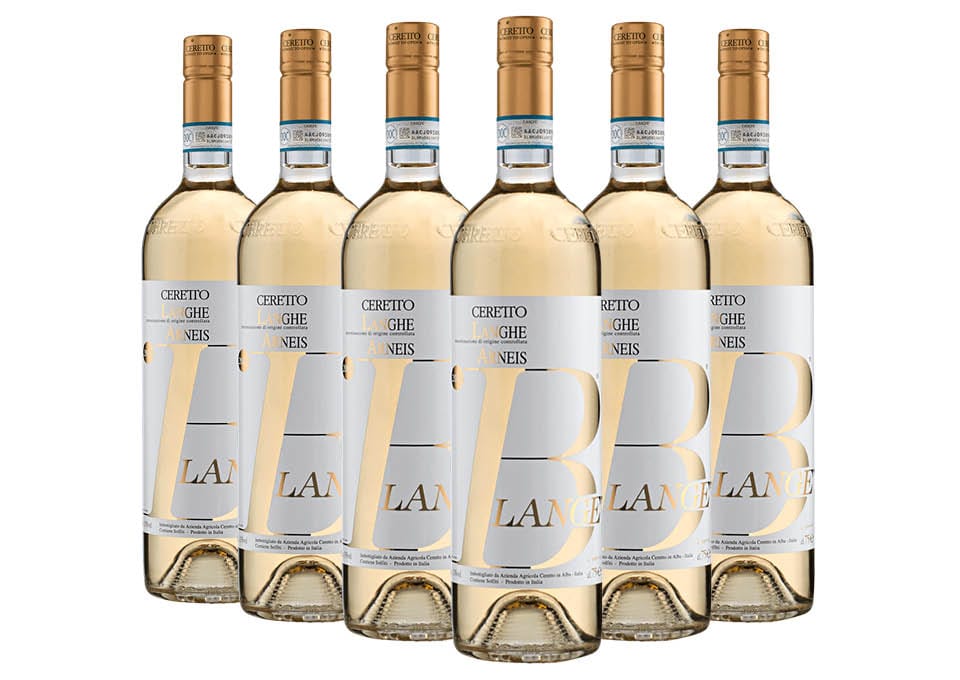Ceretto, Arneis
Ceretto was born as a family business in the early 1930s by the hand of Riccardo Ceretto. Thanks to his sons, Bruno and Marcello, the company's vineyards expand into the Langhe and Roero, giving rise to what are now recognized as the company's great Barolo and Barbaresco crus. Marcello in particular brings this winery to success with the concreteness and simplicity of a true winegrower, so much so that years later he declares: "All I know is a gift from the years spent waiting for gems and fruit, to fear for clouds coming to close to the harvest, to listen to the wind that announces the hail, to watch the sun beating on the stump, to prune and see pruned, to take a handful of earth, close the fist, open it to see how the earth is crumbling, or stays thickened. "
Ceretto
Today the company has about 160 hectares of owned vineyards arranged between the DOCG Barolo, the DOCG Barbaresco and the Blangé vineyards. The undisputed master is Nebbiolo , which since 2010 follows the dictates of biodynamic agriculture together with Barbaresco, while for the other vines Ceretto follows the organic approach, with the intention, however, to extend all production to biodynamics. From the great crus such as Bricco Rocche - the smallest vineyard of the entire Barolo appellation - or Asili as regards Barbaresco, wines are born that are now true cult of this terroir, appreciated and sought after by enthusiasts and critics of all. the world.
Ceretto white wine
The most famous white wine of the Ceretto winery is the Ceretto Blangé Roero Arneis, obtained exclusively from an indigenous Piedmontese variety, the Arneis, vinified in purity in steel to maintain the primary aromas of the grapes. As often happens in Piedmont, also for Ceretto the Arneis is the only white in a universe of red wines and for this reason it represents a continuous challenge for the Ceretto family.
What is the peculiarity of Barolo Ceretto Bricco Rocche?
Barolo Ceretto Bricco Rocche comes from a single vineyard, which is the smallest plot of the entire Barolo appellation.
Does Blangé Ceretto also exist in Magnum format?
Blangé Ceretto exists in various formats, including magnums.
Arneis is the native Piedmontese white grape variety symbol of Roero. Originally the Arneis grapes were used to soften the Nebbiolo grapes so as to define the wine obtained with them the 'Barolo Bianco'. In the 1970s only Vietti and Bruno Giacosa produced Arneis to the point that only the increase of interest in this variety in the following decades could lead to new plants. The Roero area extends on the left bank of the Tanaro river, right in front of the Langhe hills and the famous villages of Barolo and Barbaresco. In an area very suitable for viticulture, Arneis is quite vigorous, with good productivity and ripening expected by the end of September. Small productions of Arneis also appear in California, Oregon, New Zealand and Australia. The best examples of Arneis tend not to be aged in wood and are drunk within two years of bottling. The wine has a straw yellow color. The olfactory profile is intense and of great elegance, with aromas of flowers, white fruit and tropical nuances. On the palate it has a rich, full, soft, pleasantly fruity bouquet with moderate acidity. Some companies, in addition to still wines, produce sparkling versions, both with the Charmat method and with the Metodo Classico. Arneis is an excellent wine as an aperitif and goes very well with fish or vegetable appetizers, with cereal and vegetable soups, with seafood first courses and more generally with fish menus. Try the combination with tomini, grilled robiola or with a fresh cheese platter.
Why buy Arneis
If you are planning a disengaged aperitif or if you want to open the meal with a wine of great impact, buying Arneis can be the best and most advantageous solution. With its full and varied bouquet, Arneis is able to amaze at the first sip. Easy to appreciate, direct and very balanced, it can be considered a wine within everyone's reach, even for those who, as a non-connoisseur, want to appreciate the aromatic complexity of a wine without encountering excesses or surprises.
What are the best Arneis wines?
The best Arneis are undoubtedly those produced to be consumed very young with good fruit persistence and great aromatic intensity. Reference names in the production can be Malvirà, Bruno Giacosa, Sordo, Cascina Chicco.
Where is Arneis wine produced?
The traditionally most suitable area in which Arneis wine is produced is the Piedmontese one corresponding to Roero, that is the hilly area of the Province of Cuneo which borders the area of Alba and which includes municipalities such as Montà, Montaldo Roero, Vezza d'Alba.
What are the best combinations for Arneis wine?
For the best combinations to suggest compared to Arneis wine, the traditional Turin dishes are certainly the most suitable for enhancing its organoleptic characteristics. Among these, the Arneis-style rabbit, the Tajarin seasoned with butter and sage or white truffle, the raw meat of veal worked with a knife.


